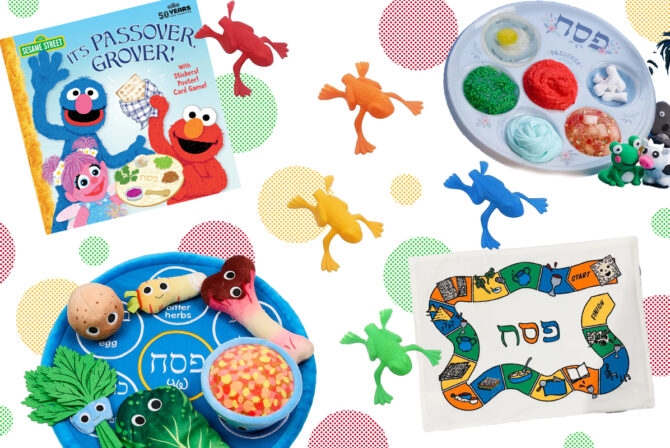This post is part of our Torah MOMentary series. This Shabbat we read Parashat Metzora. To read a summary of the portion and learn more, click here.
Bath time. It’s so simple, yet so transformative.
Most evenings around 7 p.m., Sylvie enters the tub covered in the evidence of a day well spent. You know the look: pasta sauce in her curls, a thin layer of dried snot on her cheeks, dirt on her knees, lint between her toes, and streaks of green finger paint in random places.
Come to think of it, by the end of dinnertime she brings to mind my fashion preferences as a teenager in the 90’s. You know the look: torn jacket, messy hair, smudged eyeliner, chipped nail polish.
Twenty minutes later, after some gentle scrubbing with some overpriced “natural baby” soap and a washcloth, a very different version of Sylvie emerges from the bathtub. Wrapped up in a giant hooded towel, she glows with cleanness, from her curls down to her little toes.
My teenage ’90s self probably could have used a bath, too, though acne makes the squeaky-clean look a little harder to achieve…no matter how much you bathe.
Do I digress? Well, yes and no. Just when you thought the Torah couldn’t possibly say any more about gross body stuff, along comes this week’s portion, Metzora. Two more whole chapters on scaly skin, “greenish streaks,” and “eruptive affections.”
When our bodies do something weird, whether it’s acne or something more serious, it’s hard not to obsess about it. But the Torah doesn’t focus on the “eruptive affections” themselves–rather, this portion is about moving past them. Metzora is actually a long list of instructions about what to do when the body suddenly erupts into weirdness.
How to heal. How to purify. How to move on. How to return to yourself and to the community.
I’ve been reading recently about post-partum rituals in different cultures. I was surprised to find out about the “cuarenta” period many Latin American women observe after birth. During the cuarenta, a new mother is supposed to rest, to avoid housework, sex, and certain foods. Sometimes she will also wrap her belly, cover her head, and avoid washing her hair. (Apparently, this is also the etymology of the word “quarantine.”)
First of all, it sounds like a pretty awesome ritual. Second, it originally derives from the Torah’s recommendation of a forty-day period of postpartum seclusion–which kicked off this whole discussion of bodily occurrences in the first place!
It’s not only cultures influenced by the Bible who believe post-partum women need an extended rest period before rejoining the outside world. In many parts of Asia, new mothers observe an unrelated but similar custom called “doing the month.”
Of course, it’s easy to be envious of other cultures’ traditions when you don’t have to actually observe them. But part of me couldn’t help but feel that some sort of long, official transition would have eased my entry into motherhood, physically and emotionally.
And it got me thinking more about the Torah’s prescriptions for what to do when you hit one of those weird bodily moments. They sound weird and antiquated, but maybe the idea of a transition ritual actually makes sense.
The Torah’s recommendations vary depending on the type of issue you’re dealing with. But there are a few basic elements: a priest; a period of separation from the community; some sort of sacrifice or offering. And at the end of this process, there’s almost always an immersion.
Which brings me to bath time.
The mud, marker, and dried peanut butter that Sylvie accretes during a normal toddler day don’t require a priest, a separation, or a sacrifice. All she needs is the last step, her ritual 7 p.m. immersion. It’s a physical cleaning, but also a marker that the day is coming to an end, that we are winding down and preparing for bedtime.
On normal days, a ritual shower is enough for me to feel renewed, too.
But for larger transitions of the body–giving birth, or recovering from a major illness, or maybe even just the end of a menstrual period, as described in this portion–I feel like the Torah is on to something.
I’m not saying I literally want to observe the rules of Metzora, but the ideas behind them? Maybe. The priest could be a wise friend or therapist. The ritual seclusion could be a couple hours alone. The sacrifice could be a donation to charity or some other act of generosity.
And the ritual immersion? Actually, that’s the one part we have held onto in modern times–every town where there are Jews also has a
mikveh.
But on the other hand, there’s always the tub…maybe with some candles, or essential oils, or bubble bath, or whatever makes it a ritual for you. The ritual bath and its simple power…for toddlers and their mamas alike.
To read the previous posts in our Torah MOMentary series, click here.
Like this post? Get the best of Kveller delivered straight to your inbox.








